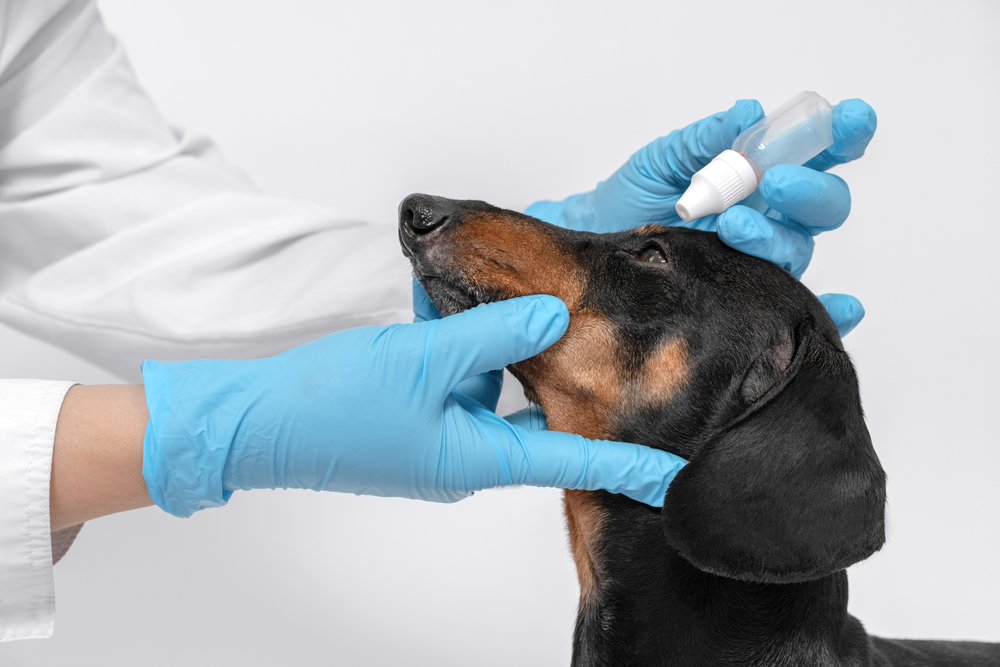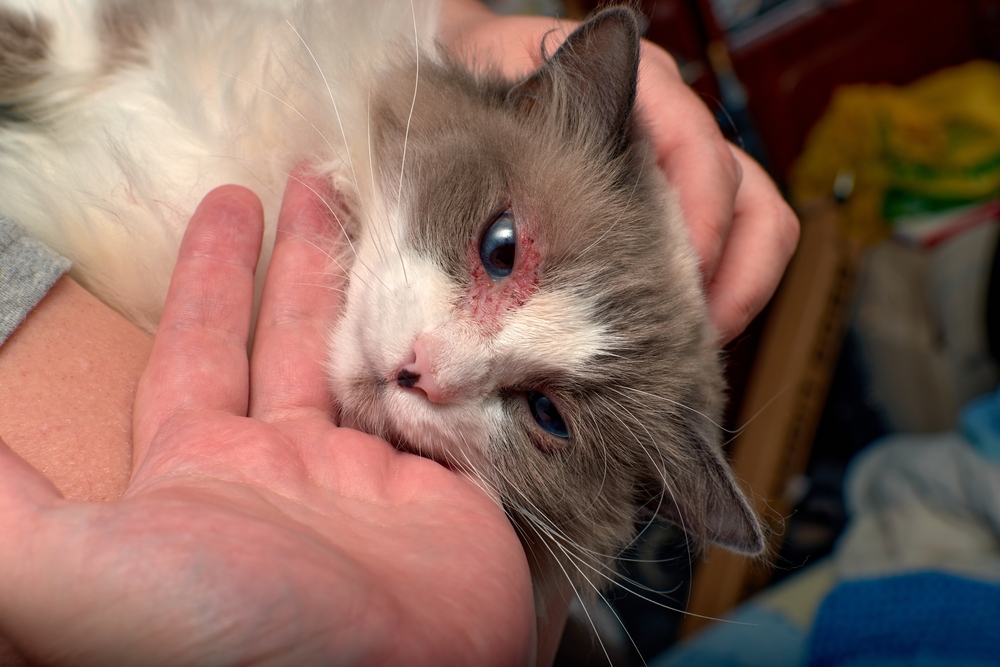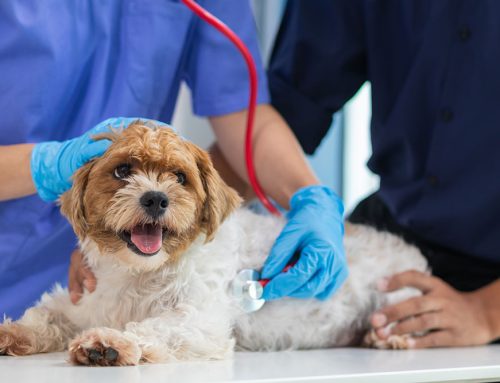The eyes are a complex organ that works with the brain to help your pet see, sense light, and navigate the world. Primary eye diseases and systemic conditions that manifest in the eyes can cause your pet serious discomfort, and can lead to blindness. The first sign of an eye problem is often eye redness, which can be accompanied by squinting, tearing, rubbing, thick discharge, pain, or vision changes. Because eye redness can signal a serious issue, the Liberty Veterinary Hospital team wants pet owners to understand the possible causes, and what to do if their pet’s eyes become red.
#1: Conjunctivitis in pets
The conjunctiva is the translucent, pinkish tissue that lines the interior eyelid surfaces and eye whites (i.e., sclera). The tissue contains many blood and lymph vessels and can easily become swollen and inflamed, given the right circumstances. Conjunctivitis usually affects both eyes, but can occur in only one eye, appearing as a red eye with swelling around the eyelids, tearing or discharge, itching, and sometimes squinting.
Conjunctivitis is usually a symptom, not a disease in itself. Causes in dogs include environmental allergies, an allergy-like condition in young dogs called follicular conjunctivitis, and sometimes bacterial or viral infection. In cats, the cause is usually a viral infection—typically herpesvirus— and may be complicated by secondary bacterial infection. Treatment includes anti-inflammatory, anti-viral, or antibiotic drops or ointments, and sometimes systemic allergy treatments.
#2: Dry eye in pets
Dry eye (i.e., keratoconjunctivitis sicca [KCS]) is a common condition in dogs and rare in cats, where the tear glands or the nerves associated with the tear glands are damaged, which reduces tear production. The tear film is crucial to eye health, and without healthy tears, the eyes become red, itchy, irritated, and produce thick, yellow-green discharge. Dry eyes are prone to damage and often become scarred and cloudy over time. Most dogs with dry eye respond well to topical tear stimulant drops or ointments, but may also need temporary anti-inflammatories or antibiotics. In severe cases, surgery that moves a saliva duct from the mouth to the eye can maintain lubrication.

#3: Corneal ulcers in pets
The multi-layered cornea is the clear window covering the eye front, and a scratch or abrasion in the superficial top layer can cause a corneal ulcer. Deeper ulcers that eat through the corneal layers can develop if a superficial ulcer becomes infected, which is more common in smushed-face (i.e., brachycephalic) breeds. Most traumatic ulcers heal well in a few days with antibiotic drops to prevent infection, but deep ulcers require aggressive medical therapy or surgery performed by a veterinary ophthalmologist.
In some cases, ulcers are caused by another problem and will keep recurring, or fail to heal. Causes include eyelids that roll inward, abnormal eyelashes, existing corneal disease, age-related changes, or herpesvirus in cats. These pets may require additional treatments, surgery, or a procedure to correct the underlying issue and heal the ulcer.
#4: Uveitis in pets
Uveitis is inflammation inside the eye’s front chamber that can affect dogs or cats. Redness may be the only initial sign, but your pet could also show light sensitivity, squinting, or pain. Inflammation in this area can occur in one eye or both eyes, and is usually caused by a systemic problem, such as a bacterial, viral, or fungal infection, cancer, or an auto-immune attack on the eyes. Glaucoma or retinal detachment that leads to blindness can develop subsequent to uveitis, so prompt diagnosis and treatment are crucial. If your veterinarian suspects your pet has uveitis, they will likely run several tests and refer you to a veterinary ophthalmologist for further care.
#5: Glaucoma in pets
Primary glaucoma is considered a genetic or inherited disease in dogs, affects some breeds more than others, and occurs only rarely in cats. The condition usually strikes in middle age, starting in one eye and eventually manifesting in both, increasing the pressure inside the eye. A dog who develops one red eye, which could also appear cloudy, blue, or swollen, may have glaucoma.
High eye pressure is painful and can lead to blindness. Medications can control eye pressure in dogs with glaucoma for several months or years, but they stop working at some point. These pets can be referred to an ophthalmologist for vision-sparing surgery, but this is an expensive option. For dogs who lose their vision to glaucoma in one or both eyes, surgery to remove the eyes or reduce the inside pressure can restore their comfort.
What to do if your pet’s eyes are red
Call our team to schedule a visit if you notice eye redness, discharge, squinting, tearing, rubbing, vision changes, or other concerning eye issues in your pet. Do not give them over-the-counter eye drops or medications without talking to us first. We will examine your pet’s eyes, perform a full-body examination to look for other clues, and perform eye tests to determine the eye pressure, tear production, and presence of any ulcers. We can treat most basic eye conditions in-house, but if we feel your pet’s condition is severe, complex, or vision-threatening, we may refer you to a veterinary ophthalmologist.
In some cases, your pet’s eye redness is normal or may be caused by a minor, transient irritant. In other cases, the redness can indicate an underlying disease or condition that needs immediate treatment. Contact the Liberty Veterinary Hospital team if you have questions about your pet’s eye health, or to schedule a check-up for your pet’s eyes.








Leave A Comment